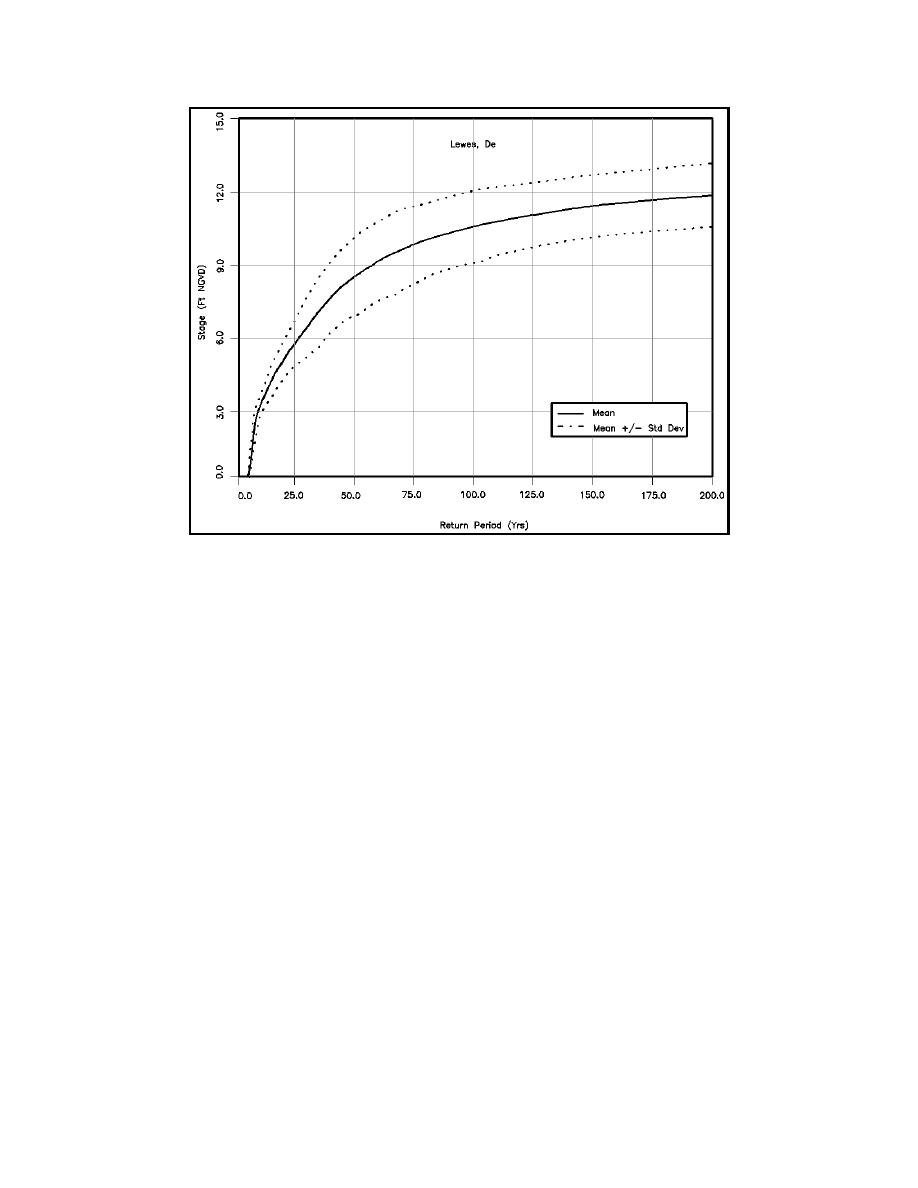
EM 1110-2-1100 (Part II)
30 Apr 02
Figure II-5-27.
Stage-frequency relationship - coast of Delaware
(3) The extratropical application of the EST can be used to develop recurrence relationships for any
parameter if the database of parameters is sufficiently large to define the full population of possible events.
A sample application was made to a dredged disposal site located in the New York Bight, on the east coast
of the United States. The goal was to determine the recurrence interval of bottom erosion resulting from the
11 December 1992 extratropical storm event. An existing database of severe extratropical storms that
impacted the Bight was available with corresponding wave conditions, maximum storm surge elevation, and
tidal phase for each storm of the set. These data were used to define a database of peak sediment transport
magnitudes, computed as a function of wave height, current (computed from surge elevations), depth, and
grain size (Scheffner 1992). These data were input to the EST specifying only one input vector, the peak
sediment transport magnitude (QX), to generate 1,000 repetitions of a 500-year simulation. For each
500-year simulation, a transport versus frequency-of-occurrence relationship was computed. As described
above, an average curve was computed, which included variability. Results of the analysis are shown in the
(4) Historical data on storms in and around the coasts of the United States have been recorded and
published in detail since the late 1800's. For example, NOAA publishes an atlas of tropical storms (NOAA
1981) that is continuously updated to reflect recent events. The distribution of east coast tropical events over
the period of 1886-1980 is shown in Figure II-5-29, in which the tracks of the 793 Atlantic tropical cyclones
reaching at least tropical storm intensity are shown. The Wave Information Study (WIS) of CHL has hindcast
data for extratropical storms covering over 30 years.
(5) Recent advances in numerical modeling techniques make it possible to use these very large databases
of storm event track, wind, and pressure to simulate storm surges associated with each event. These sources
provide data used to develop storm surge versus frequency-of-occurrence relationships.
II-5-50
Water Levels and Long Waves


 Previous Page
Previous Page
